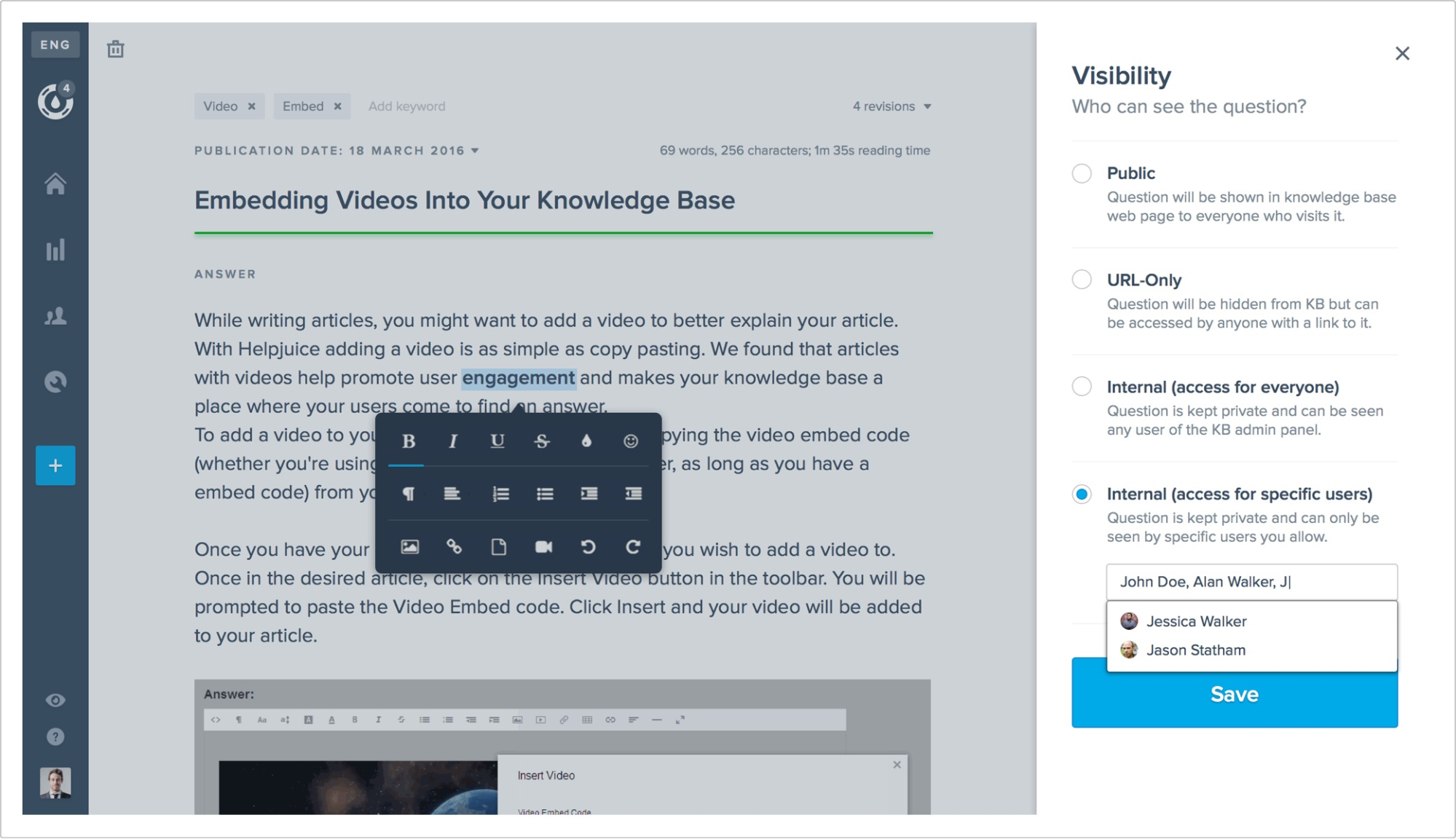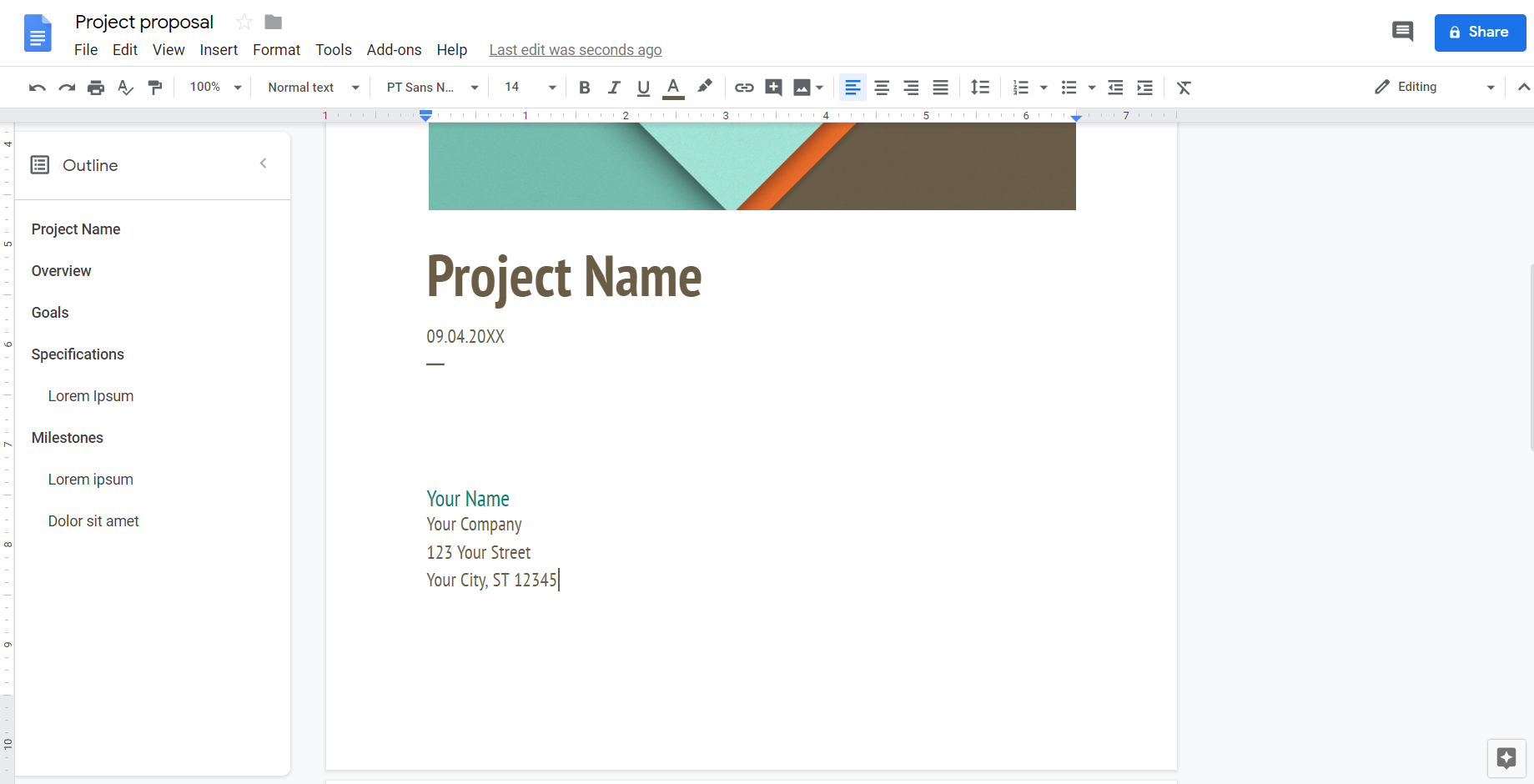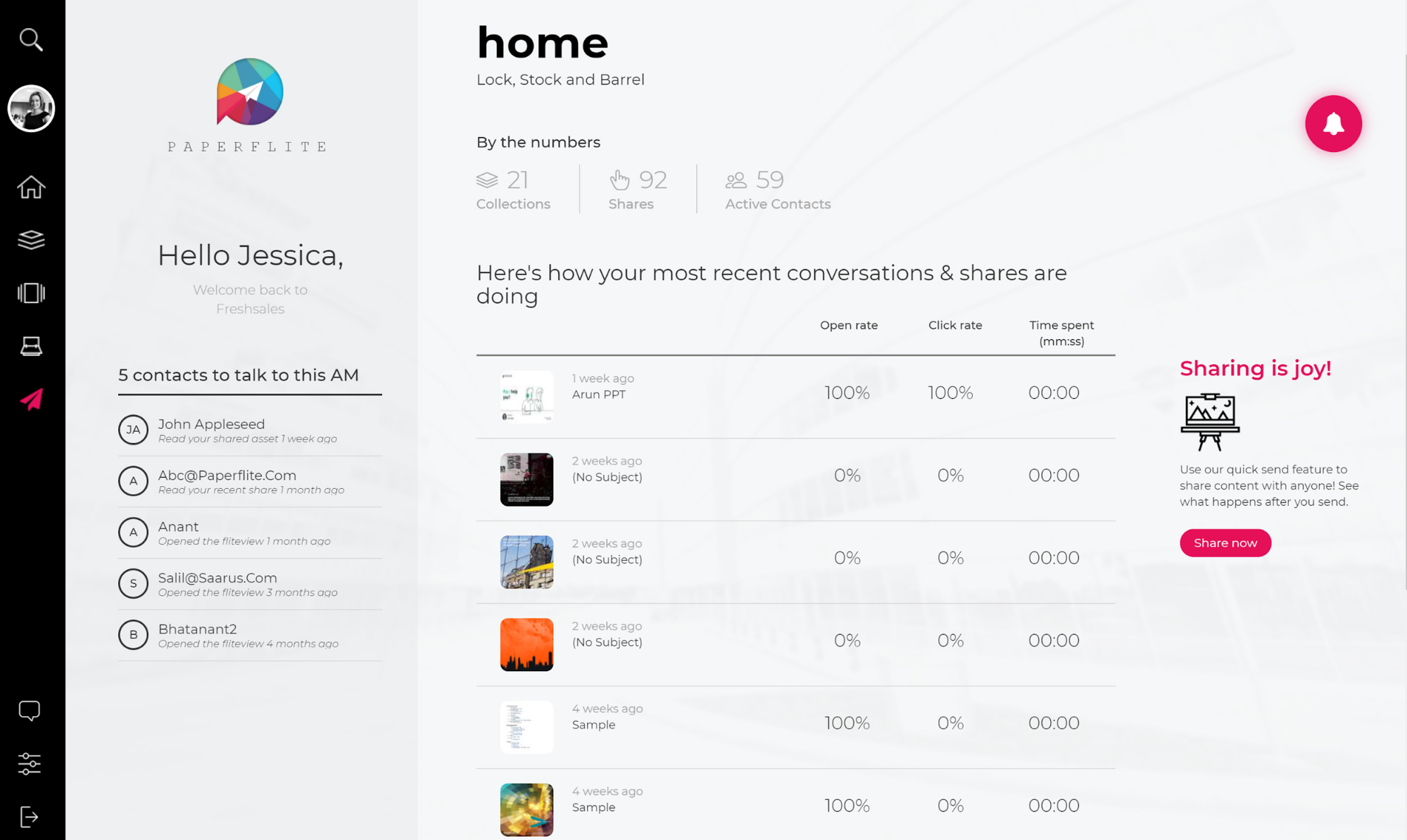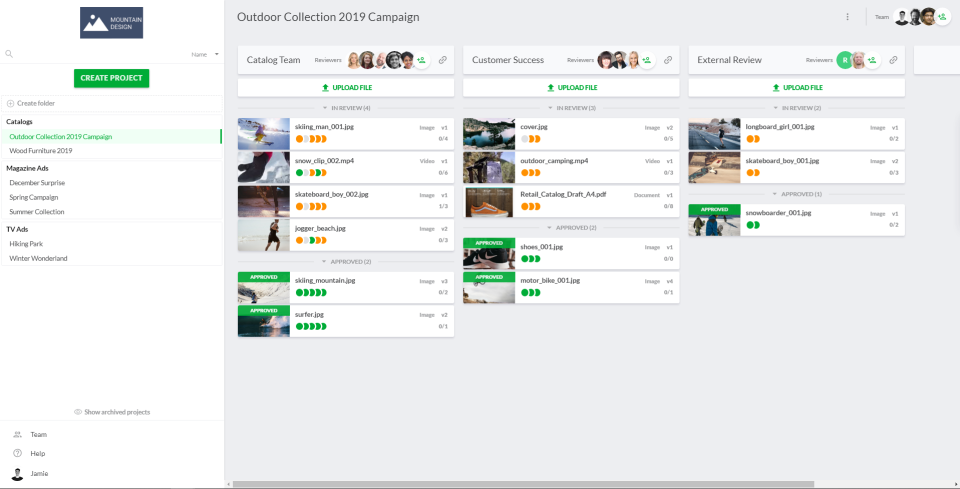In today's fast-paced business world, effective collaboration is not just a convenience; it's a necessity. Yet, many of us find ourselves drowning in a sea of scattered files, struggling with incompatible formats, or facing the nightmare of 'Version_Final_v3.docx' scenarios. These challenges not only waste precious time but also impede our ability to work together effectively.
In fact, according to a 2018 survey by Nintex—titled Definitive Guide to America’s Most Broken Processes—39% of knowledge workers find it difficult to co-author documents. The challenges are multifaceted:
- 49% have trouble locating documents
- 43% find it difficult to share documents
- 33% struggle with document versioning
These pain points not only waste precious time but also significantly impede our ability to work together effectively.
Now, let's imagine a scenario where these issues are a thing of the past, where accessing, sharing, and co-editing documents is a breeze, and where version control is no longer a puzzle. This is the world of efficient document collaboration—a world where technology bridges gaps, simplifies processes, and empowers teams to achieve more.
In this post, we're diving into the nitty-gritty of document collaboration. We'll start by unpacking what it really means to collaborate on documents effectively, highlighting the key features you should be looking for in your ideal software.
The Essence of Team Collaboration Through Documents
At the heart of team collaboration is the art of working together on a variety of documents. Be it sharing meeting notes, crafting joint press releases, developing comprehensive technical documentation, sketching out detailed project plans, or recording valuable lessons learned, each document serves as a critical communication channel.
Unlike real-time discussions or meetings, communicating through these long-form documents allows for asynchronous collaboration, offering a more reflective and efficient way to exchange ideas and drive decisions. This shift not only enhances clarity and context but also ensures that valuable insights are captured and preserved for ongoing reference and learning.
This isn't just about picking the fanciest tool; it's about finding the right fit that addresses these common hurdles while boosting your team's productivity and streamlining your workflows. From small businesses juggling a variety of projects to large corporations managing cross-continental collaborations, selecting the right document collaboration tool can be a game-changer in enabling team success.
Before we jump into the top picks for document collaboration software of 2024, let's first understand what makes for great collaboration software and how it can turn your work processes from chaotic to coherent. Stick with us as we lay down the essentials of document collaboration, and then unveil the tools that can transform how your team works together, making team collaboration not just a task, but a seamless part of your day-to-day business.
Document Collaboration Goes Beyond Sharing Files Online
Imagine you and your colleagues are tasked with preparing the monthly content marketing report. This isn't just about starting with a blank document; it involves accessing and collating data from various knowledge management tools and spreadsheets, covering everything from content produced to conversion rates. The complexity mounts when you need to collaborate with others in real-time, merging insights and inputs from different sources.
This scenario highlights that effective document collaboration goes beyond merely sharing files online. It's about organizing your collective knowledge into a single, accessible location. This is where document collaboration intersects with knowledge management, creating a seamless environment where data and ideas can flow freely among team members.
What is Document Collaboration Software?
So, what exactly is document collaboration software?
It's a tool designed to enable multiple users to work on a single document simultaneously, editing and collaborating in real-time. This is especially useful for teams working on projects together or for individuals who need to coordinate their efforts on a document with others.
Document Collaboration Software Features to Look For
Before we dive in, let’s talk about some of the features you should look for when selecting the best document collaboration tool for your organization:
-
User-friendly interface: A straightforward and intuitive interface is vital to ensure all team members can use the software effectively, regardless of their technical proficiency.
- Real-time collaboration: Enables multiple team members to work on the same document simultaneously. This feature ensures that everyone can contribute their ideas and edits in real-time, fostering a dynamic collaborative environment. Ideally, there should be some sort of built-in chat or commenting features so that as team members are working on a document, they can also communicate and provide feedback directly within the document, streamlining discussions and decision-making.
- Version control: This feature allows you to actively track and manage different versions of a document. It allows you to revert to previous versions if needed and keeps the document's evolution clear and organized.
- Change tracking: This feature records who made specific changes and when, providing transparency and accountability in the collaborative process. It's crucial for understanding each contribution's context.
- Access control and permissions: Offers the ability to control who can view, edit, or share the document. This feature is essential for maintaining document security and managing team collaboration effectively.
- Usage tracking and reporting: This can be useful in many cases. Imagine you’re training a new employee and you want to know if they saw your onboarding instructions, or you want to know if your boss saw the report you sent her last week.
- Centralized knowledge repository: Aids in organizing documents in a user-friendly manner, often with tagging, categorization, and search functionalities, making it easy to locate and access documents quickly.
Without further ado, let’s jump into the best document collaboration platforms.
The Best Document Collaboration Software in 2024
The right document collaboration tool will depend on the needs of your organization and team. That being said, some of the top options that are widely used and highly regarded include:
1. Helpjuice
Best for: Teams that want to manage both internal and client-facing information in one centralized, searchable hub.
Strictly speaking, Helpjuice is more than a document collaboration tool. It’s a full-blown knowledge base platform that enables you to capture, store and share information quickly with your team or with customers.
In terms of document collaboration, Helpjuice offers a clean and simple interface that lets you quickly create documents and co-edit them while keeping track of previous versions. The four access levels give you full control over who sees your content—you can publish it online, share it internally, generate a universal shareable URL or invite specific people.

Highlights:
- Allow multiple authors to work on a single article and have each revision recorded as well as who made the revisions.
- Publish product documentation into a modern-looking online portal.
- Create an internal knowledge base with best practices, tips, and onboarding documents.
- Track statistics—What are your most popular pieces of content? Where are the content gaps?
- Google-like search helps you find information quickly.
Transforming Team Collaboration with Helpjuice: A Project Manager's Success Story
In the realm of document collaboration, the journey of Robert Grozell, a Project Manager, stands as a testament to the power of the right tools.
Robert's team was swamped with support calls, primarily after business hours, which not only strained resources but also impacted employee morale. Internally, the dependency on select individuals for specialized tasks hindered team flexibility. This scenario called for a solution that not only facilitated customer support but also fostered an environment of shared knowledge within the team.
Amid various contenders, Helpjuice emerged as the clear winner. Its user-friendly mobile interface and cost-effective pricing were compelling, but its standout feature was the robust document collaboration capabilities. Helpjuice's ability to allow multiple users to work on the same document simultaneously perfectly aligned with Robert's goal of enhancing team collaboration.
The implementation of Helpjuice was a game-changer as it streamlined the migration and formatting of existing documents, facilitating the swift creation of an internal knowledge base. This efficiency cut the training period for new employees from six months to three. Additionally, on the customer support front, Robert projected a reduction of 50-100 support calls in the first year alone, a testament to the software's impact on operational efficiency.
With Helpjuice, Robert's team moved beyond mere document management to embrace a culture of shared knowledge and collaborative growth, setting a new benchmark in team collaboration and customer support.
2. Google Docs

Best for: Teams that want a cloud-based word processor with great formatting capabilities.
Part of the Google Drive suite, Google Docs resembles desktop word processors However, don’t expect this tool to replace software like Microsoft Word and OpenOffice Writer.
You can import and export existing documents in popular formats like DOCX or create new ones within Google Docs. The platform has a rather impressive set of editing and formatting options and sharing documents is very easy—you can invite collaborators via email or shareable link.
Highlights:
- Upload and export files in a variety of formats such as DOCX, PDF or even EPUB
- Documents are auto-saved as soon as you make a change
- Versions are created automatically for you
- It’s easy to share documents but you can also keep them private
- Rich set of formatting options
3. Zoho Workdrive
Best for: Secure cross-team collaboration on a large number of files.
Zoho Workdrive is an online platform for sharing and co-editing files among team members. Thanks to its Team Folders feature, you can organize a large number of files and collaborate with your team using Zoho’s Office Suite editors.
 (Source)
(Source)
Zoho’s superpower lies in its all-around security. You get granular access control for each file thanks to features like role management, administrator controls, and workspace management. Unlike many similar solutions, Zoho Workdrive provides end-to-end encryption for your files.
Highlights:
- Documents can easily be organized in folders and workspaces
- Files in transit are encrypted with Perfect Forward Secrecy
- Files at rest are protected with a 256-bit encryption algorithm
- Detailed permission management allows you to decide exactly who should have access to the data
- Create links that expire automatically
4. Paperflite
Best for: Sales and marketing teams that want to track how their assets are performing.
Spend hours creating compelling sales collateral, craft persuasive email, hit send… and cross your fingers. That’s how marketers and sales reps used to work before tools like Paperflite existed.
Paperflite is a document management and collaboration platform that helps sales and marketing teams to organize, distribute and share their content. This tool stores all of your content in a centralized, searchable hub that is always up to date. You can track key metrics such as views, downloads, shares and even average view time.
 (Source)
(Source)
Highlights:
- Integrates with other data analytics tools
- The analytics are so detailed that you can even see which portion of the document your prospect or customer engaged with the most
- Create personalized landing pages for each customer
- Require email to download your content
- Organize your assets with tags and categories
5. Dropbox Paper
Best for: Companies that want a centralized workspace with simple and easy-to-use document editing tools.
If you’re looking for a no-frills document editing tool, then Dropbox Paper might be the way to go. Similar to some of the services we already reviewed, Dropbox Paper allows you to add rich media and code from 29 third-party services such as Youtube, Soundcloud, Vimeo, and Google Maps. Keep in mind, though, you don’t have as many formatting options as in Google Docs.
When it comes to sharing, all you need to do is invite your team members. You can share specific documents or entire folders with others. There is also a simple task management interface that allows you to assign to-dos.
 (Source)
(Source)
Highlights:
- The interface is clean and simple
- Add rich media from 29+ services
- When you insert multiple images, the platform will arrange them into a gallery grid
- Embed code (can be useful to developers)
- Generates a table of contents for easy navigation
6. Filestage
Best for: Teams that want to manage their entire content review process in one place.
Filestage helps teams manage feedback in a simple and powerful way. This document collaboration tool allows you to review videos, images, PDFs, documents, and even website designs.

Filestage’s most notable feature is the ability to click and leave feedback at a precise point in a file, e.g. comment on a specific area of an image or a specific time in an audio file. This makes the platform extremely helpful to creative teams.
Highlights:
- Your files are protected through AES 256-bit encryption.
- You can use your own branding
- Clients can review files without signing up thanks to the secure sharing links
- The dashboard lets you track project progress
- The system keeps a record of all document versions and comments
7. Notion
Best for: Teams and individuals seeking a versatile, all-in-one workspace for notes, tasks, wikis, and database management.
Notion combines the functions of note-taking, task management, and database handling in a single, flexible platform. It stands out for its ease of use and ability to adapt to various workflows, making it a favorite among teams looking for a highly customizable collaboration environment.

Highlights:
- Customizable pages and databases for versatile content management
- Seamless linking between pages for easy navigation and organization
- Integrated task and project management tools
- Extensive template options for a variety of use cases
- Easy sharing and collaboration features, ideal for both internal and client-facing projects
(If you're curious about how Notion stacks up against some of the other tools on this list, you might find our article on The 10 Best Notion Alternatives to be helpful).
8. Microsoft OneDrive & Office Online
Best for: Teams already using Microsoft products, seeking seamless integration with Office suite.
Microsoft OneDrive, combined with Office Online, provides a robust platform for document collaboration.
 It integrates seamlessly with Microsoft Office applications like Word, Excel, and PowerPoint. Teams can work on documents simultaneously and see real-time changes. OneDrive offers substantial cloud storage, making it easy to store and share files. It also includes features like file versioning, advanced search capabilities, and various sharing options.
It integrates seamlessly with Microsoft Office applications like Word, Excel, and PowerPoint. Teams can work on documents simultaneously and see real-time changes. OneDrive offers substantial cloud storage, making it easy to store and share files. It also includes features like file versioning, advanced search capabilities, and various sharing options.
Highlights:
- Real-time co-authoring in Office documents.
- Integration with Microsoft 365 suite for a unified experience.
- Advanced security features, including file encryption.
- Automatic syncing across devices.
- Comprehensive version history to track and revert changes.
9. Confluence by Atlassian
Best for: Teams looking for a powerful, integrated platform for team collaboration and project management, particularly those already using Atlassian products.
Confluence is more than just a document collaboration tool; it's a comprehensive workspace for team collaboration and project management. It allows teams to create, share, and organize content in a highly structured way, making it ideal for larger teams and projects.

Highlights:
- Deep integration with Jira for streamlined project management
- Extensive template library to quickly start various types of content
- Advanced page permissions and restrictions to control access
- Ability to create a dynamic and searchable wiki
(For those considering some of the options on this list alongside Confluence, our article We Explored Confluence Alternatives: The Best 14 Revealed offers a comprehensive look at the top alternatives in the market).
10. Slack
Best for: Teams seeking a collaboration tool that integrates communication and document collaboration.
While primarily known as a communication tool, Slack also offers features for document collaboration.
 It allows teams to share files directly in the chat and integrates with other document management tools like Google Drive and Dropbox. This integration enables team members to collaborate on documents without leaving the Slack interface, streamlining the workflow.
It allows teams to share files directly in the chat and integrates with other document management tools like Google Drive and Dropbox. This integration enables team members to collaborate on documents without leaving the Slack interface, streamlining the workflow.
Highlights:
- Seamless integration with various document management systems.
- Ability to share and discuss documents in real-time within the communication platform.
- Notifications and updates on document changes.
- Searchable history for files and conversations.
- Secure file sharing with external and internal stakeholders.
Turn Your Documents Into Company Knowledge With Helpjuice
As we navigate through the 2020s, leveraging cloud-based systems for document management has become a standard practice. Yet, effectively finding and collaborating on documents remains a challenge for many.
The crux of the issue isn't just about uploading documents to the cloud. True efficiency lies in not only accessing these files but also in seamlessly collaborating on them. And that's where many systems fall short – they offer storage but not the intuitive collaboration and organization that teams really need.
This is where Helpjuice steps in to transform your approach to document management. Our platform does more than just store your documents; it integrates them into your company's collective knowledge. With Helpjuice, you get a single, searchable online portal where documents are not hidden in a labyrinth of folders. Our intuitive categorization and Google-like search functionality bring you the exact document you need with just a few keystrokes.
Don't let document management be a stumbling block for your team. Embrace the simplicity and efficiency of Helpjuice. To discover how we can enhance your document collaboration and transform your documents into accessible, usable knowledge for your employees, start with our free 14-day trial.






